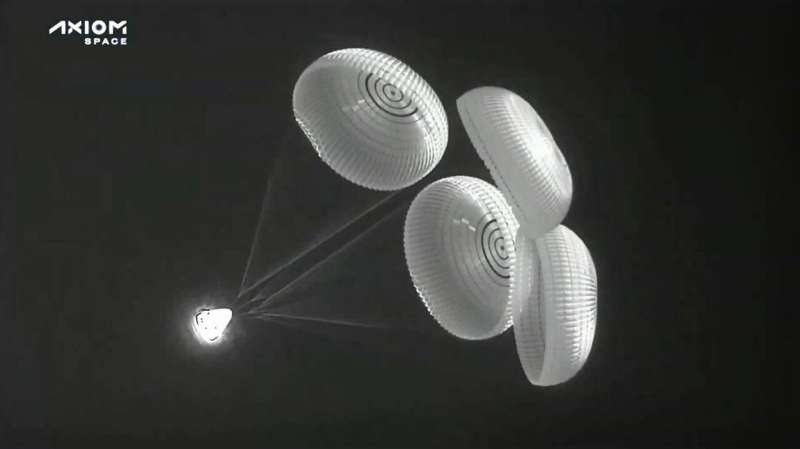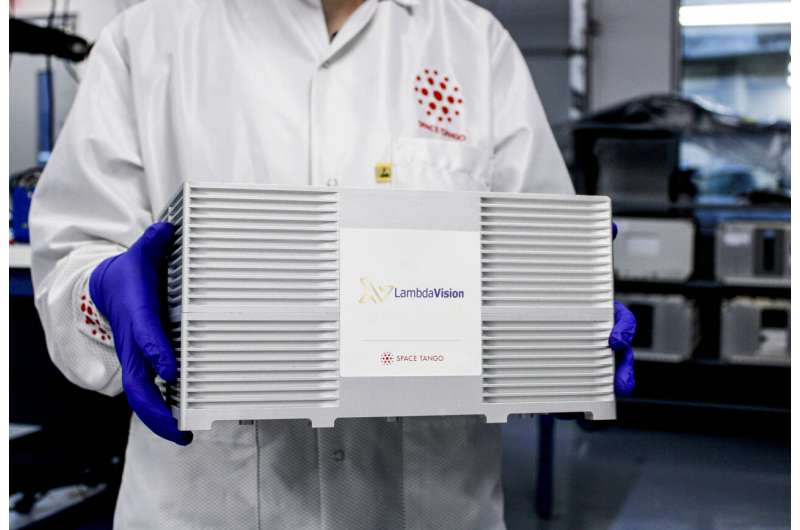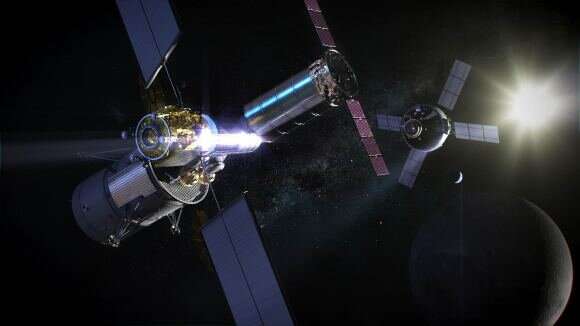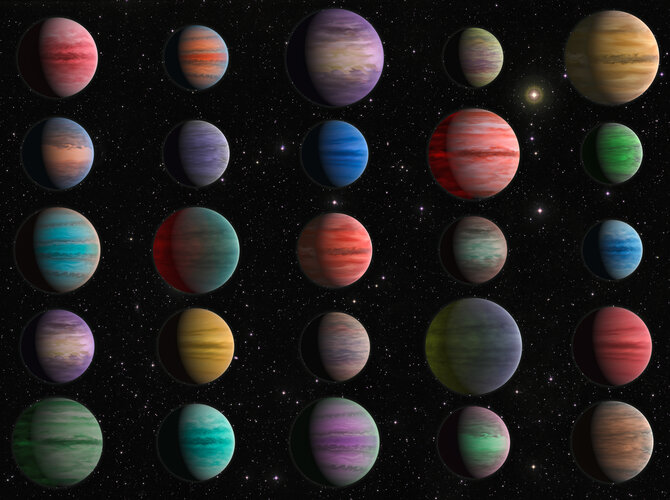
Copernical Team
Nation mulls mission on far side of moon
 Chinese scientists and engineers are considering sending a robotic probe to collect dust and rocks from the far side of the moon, an ambitious endeavor that would likely be a world first, according to a senior space agency official.
Wu Yanhua, deputy director of the China National Space Administration, said the United States, Russia and China have brought lunar substances back to Earth, bu
Chinese scientists and engineers are considering sending a robotic probe to collect dust and rocks from the far side of the moon, an ambitious endeavor that would likely be a world first, according to a senior space agency official.
Wu Yanhua, deputy director of the China National Space Administration, said the United States, Russia and China have brought lunar substances back to Earth, bu Rad Rock Rumblings Sols 3453-3555
 Entering the weekend, we have a few more 'rad' rocks we'd like to get some science on before we drive farther away from the Greenheugh pediment and begin our journey again up Mt. Sharp.
Starting on sol 3453, we break out our arm instruments for contact science with APXS and MAHLI on "Rumblings," a rock with an interesting knobby texture, followed by a delta over to "Delting," a flat area o
Entering the weekend, we have a few more 'rad' rocks we'd like to get some science on before we drive farther away from the Greenheugh pediment and begin our journey again up Mt. Sharp.
Starting on sol 3453, we break out our arm instruments for contact science with APXS and MAHLI on "Rumblings," a rock with an interesting knobby texture, followed by a delta over to "Delting," a flat area o Artemis I, Crew-4, and Starlink Rockets on the Pad
 A SpaceX Falcon 9 rocket carrying a batch of the company's Starlink internet satellites lifts off from Launch Complex 40 at Cape Canaveral Space Force Station in Florida, on April 21, 2022.
On the right, NASA's Space Launch System rocket with the Orion spacecraft aboard sits atop a mobile launcher at Launch Complex 39B at Kennedy Space Center, wh
A SpaceX Falcon 9 rocket carrying a batch of the company's Starlink internet satellites lifts off from Launch Complex 40 at Cape Canaveral Space Force Station in Florida, on April 21, 2022.
On the right, NASA's Space Launch System rocket with the Orion spacecraft aboard sits atop a mobile launcher at Launch Complex 39B at Kennedy Space Center, wh IHI AEROSPACE received its first commercial launch service order
 IHI Co., Ltd (IA) received order for launching the small SAR satellites(*1) owned by Institute for Q-Shu Pioneers of Space, Inc. (hereinafter 'iQPS'). IA and iQPS signed the contract for launch service of QPS-SAR-3 and QPS-SAR-4 (*2) on April 18, 2022.
QPS-SAR-3 and QPS-SAR-4 are under manufacturing by iQPS with more than 25 partner companies in northern Kyushu and other parts of Japan. Tw
IHI Co., Ltd (IA) received order for launching the small SAR satellites(*1) owned by Institute for Q-Shu Pioneers of Space, Inc. (hereinafter 'iQPS'). IA and iQPS signed the contract for launch service of QPS-SAR-3 and QPS-SAR-4 (*2) on April 18, 2022.
QPS-SAR-3 and QPS-SAR-4 are under manufacturing by iQPS with more than 25 partner companies in northern Kyushu and other parts of Japan. Tw NASA extends exploration for 8 planetary science missions
 Following a thorough evaluation, NASA has extended the planetary science missions of eight of its spacecraft due to their scientific productivity and potential to deepen our knowledge and understanding of the solar system and beyond.
The missions - Mars Odyssey, Mars Reconnaissance Orbiter, MAVEN, Mars Science Laboratory (Curiosity rover), InSight lander, Lunar Reconnaissance Orbiter, OSIR
Following a thorough evaluation, NASA has extended the planetary science missions of eight of its spacecraft due to their scientific productivity and potential to deepen our knowledge and understanding of the solar system and beyond.
The missions - Mars Odyssey, Mars Reconnaissance Orbiter, MAVEN, Mars Science Laboratory (Curiosity rover), InSight lander, Lunar Reconnaissance Orbiter, OSIR Ax-1 splashes down off Florida coast, ending first private mission to ISS
 After nearly a week of delays, the first-ever all private astronaut mission to the International Space Station came to an end Monday, with the crew splashing down in the early afternoon off the coast of Florida.
"Dragon Endeavour has returned, bringing the Axiom-1 crew home," SpaceX officials announced on the livestream. "On behalf of the entire SpaceX team, welcome back to planet Earth
After nearly a week of delays, the first-ever all private astronaut mission to the International Space Station came to an end Monday, with the crew splashing down in the early afternoon off the coast of Florida.
"Dragon Endeavour has returned, bringing the Axiom-1 crew home," SpaceX officials announced on the livestream. "On behalf of the entire SpaceX team, welcome back to planet Earth Rich trio back on Earth after charter trip to space station

Three rich businessmen returned from the International Space Station with their astronaut escort Monday, wrapping up a pricey trip that marked NASA's debut as a B&B host.
Crew-4 astronauts head to space station to conduct microgravity science

NASA's SpaceX Crew-4 mission, originally scheduled to launch to the International Space Station on Saturday, April 23, from NASA's Kennedy Space Center in Florida, has been rescheduled to Wednesday, April 27. This launch carries three NASA astronauts—Kjell Lindgren, Robert Hines, and Jessica Watkins—and ESA (European Space Agency) astronaut Samantha Cristoforetti. This spaceflight is the first for Hines and Watkins and the second for Lindgren and Cristoforetti.
Here are details on some of the research riding with the crew aboard the SpaceX Dragon Freedom capsule into low-Earth orbit:
Replacement retinas
Artificial retinas could restore meaningful vision for the millions of people on Earth who suffer from retinal degenerative diseases, including retinitis pigmentosa and age-related macular degeneration. The ISS National Lab-sponsored study Protein-Based Artificial Retina Manufacturing evaluates a manufacturing process to develop artificial human retinas using a light-activated protein called bacteriorhodopsin, which could replace the function of damaged light-sensing cells in the eye.
Planetary Decadal Survey says it's time for a mission to Uranus (and Enceladus too)

Since 2002, the United States National Research Council (NRC) has released a publication that identifies objectives and makes recommendations for science missions for NASA, the National Science Foundation, and other government agencies for the next decade. These reports, appropriately named Planetary Science Decadal Surveys, help inform future NASA missions that address the mysteries that persist in astronomy, astrophysics, earth science, and heliophysics.
On Thursday, April 19th, in a briefing in Washington D.C., the National Academies of Sciences, Engineering, and Medicine (NASEM) shared the main findings of the Planetary Science and Astrobiology Decadal Survey 2023–2032. The event was live-streamed and consisted of NASEM committee members discussing the key science questions, priority missions, and research strategies identified and recommended, followed by a Q&A session with the audience.
Hubble observations used to answer key exoplanet questions
 Image:
Hubble observations used to answer key exoplanet questions
Image:
Hubble observations used to answer key exoplanet questions 